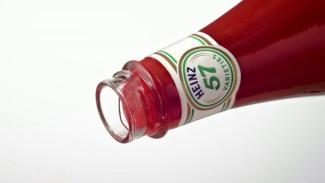
Has Kraft Heinz's Ketchup Stained Corporate Bonds Red?
“All Good Things (Come To An End).” This 2006 number by Nelly Furtado (a Canadian-Portuguese singer, in case you need a reminder) seems apt when it comes to corporate bond markets these days. In this context, ‘good things’ alludes to the unconventional, ultraloose monetary policy unleashed by global central banks in the aftermath of the global financial crisis that began in 2008 The total outstanding nonfinancial global corporate debt touched $13 trillion1 as of the end of 2018, of which US nonfinancial corporate debt accounted for roughly $6.2 trillion2. When US corporate bond markets sold off in Q42018, this high debt level came back into focus. More recently, a dovish Federal Reserve’s (Fed) decision to pause its rate-raising campaign resulted in a sharp V-shaped recovery in the debt markets. However, the froth of excess leverage keeps seeping from the market from time to time. This time, the froth spilled out of the bottle of one of Warren Buffett’s and America’s favorite ketchup brands and consumer staples giant, Kraft Heinz.
Last Friday, Kraft Heinz (KHC) spooked the market with its disappointing fourth-quarter results and guidance. The company also wrote down $15.4 billion of assets related to its Kraft and Oscar Mayer brands, and disclosed an ongoing SEC investigation about its accounting practices. KHC, which carries a long-term credit rating of BBB, also announced a dividend cut. The company’s stock plummeted 27% that day. High leverage coupled with poor management execution were the main reasons highlighted for the stock’s sell-off. KHC’s balance sheet is loaded with $30 billion3 worth of long-term debt, which is the combined result of Heinz’s 2013 move to take the company private and the 2015 merger between Kraft and Heinz. KHC is a good example of a likely scenario in which some large US nonfinancial firms may find it difficult to grow their earnings enough to meet interest rate obligations on their debt. The situation could get more complicated if economic growth slows down in 2019. Warren Buffett’s Berkshire Hathaway posted a $25 billion4 loss in Q42018 primarily due to the write-down of its stake in KHC. This points to the potential challenges in valuing these large companies, even for seasoned investors.
The KHC debacle also underscores the potential risks of large-scale downgrades in the lower credit sleeves of the investment grade spectrum. It is estimated that BBB-rated companies (like KHC) form around 50% of the investment grade bond market. The cost of servicing this debt also has increased for these companies as interest rates have risen. Even though the Fed is currently being more “patient,” a slowdown in earnings growth has acted as a headwind for many of these companies. With the prolonged credit cycle potentially on its last leg, investors must keep in mind that BBB-rated bonds are most vulnerable to falling into “junk” status. Given the sheer size of the BBB market, investors should not be surprised if they witness a large number of downgrades comparable to 2008. Morgan Stanley5, through its implied ratings, estimates that around 55% of BBB debt will be rated “junk” if the rating is based on leverage alone, and 31% of BBB debt will have leverage at or above 4.0x. In case of a recession, drawdowns might be accentuated by passive strategies like index mutual funds and ETFs, which will be forced to sell because these downgraded credits no longer align with the benchmark.
Despite the alarmingly high risks of excessive leverage in the corporate balance sheet, all is not lost yet. Companies like KHC have acknowledged the problem and have taken steps to pay down their debt. For example, KHC is considering potential asset sales, and using the proceeds, along with savings from dividend cuts, to clean up the balance sheet. However, the market is expressing its fair share of doubt on whether this step will have any material impact on the company’s leverage ratios.
Even though the ‘Fed pause’ has led to a relief rally in the high yield and investment grade corporate bond market, investors must be prepared for higher volatility going forward. Any company-specific headline related to leverage levels can be expected to create tremors in the broader corporate bond marketplace. On the positive side, sporadic sell-offs present potentially attractive credit selection opportunities for active managers, provided they have ‘dry powder’ to deploy.
So even though “all good things come to an end,” the end of the credit cycle might not be as painful as 2008, if companies take the right steps to reduce their debt to much more manageable levels and investors continue to access these markets through solid managers.

